Sesto al Reghena is a spellbinding town on the lower Friuli Venezia Giulia plain, near the border with Veneto, where a wealth of enchanting historical and architectural heritage awaits visitors. It’s a picturesque, increasingly popular place with more than a thousand years of history behind it, so exploring it is an unforgettable experience.
The history of Sesto al Reghena
From a pre-Roman settlement to a monastic site under the Lombards, Sesto al Reghena has witnessed eras of great historical significance. The abbey complex is dedicated to Saint Mary and it was built between 730 and 735 AD by three noble Lombard brothers. They endowed the monastery with their property, which was spread throughout what is now known as the Triveneto area.The abbey looked just like a medieval castle, complete with towers, walls and a moat for defensive purposes.
During a devastating raid in 889, the Magyars burned and destroyed the complex. It subsequently rose from the ashes during the Middle Ages, a time which helped to shape the character of the site. Between 1300 and 1330, a group of painters who were pupils of Giotto adorned the abbey with numerous magnificent frescoes, some of which can still be seen today.
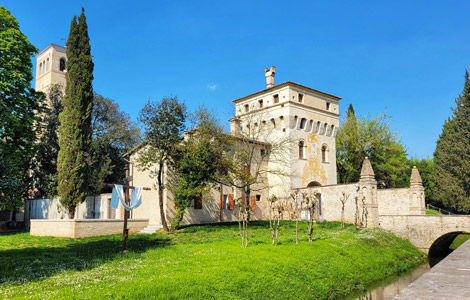
An invasion by the Republic of Venice in the 15th century marked another key chapter in the history of Sesto al Reghena, which was later annexed by the Kingdom of Italy.
The very name “Sesto al Reghena” has roots that stretch back through thousands of years of history, underlining the town’s ancient roots. Sesto means “Sixth” and it was a Roman military post situated by the sixth milestone on the road between Iulia Concordia and Noricum, while Reghena is the name of the river that flows through the town.
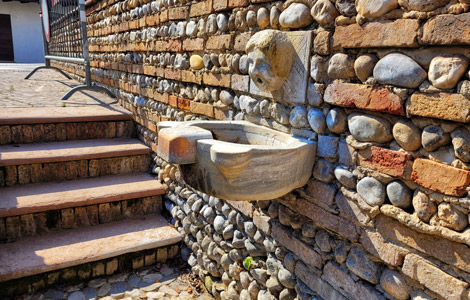
What to see in Sesto al Reghena
“Santa Maria in Silvis” Benedictine Abbey
One of the main attractions in Sesto al Reghena is unquestionably the Benedictine Abbey of Santa Maria in Silvis. The name comes from the Latin word for “forest” (“silva”) and is a reference to the vast expanse of woodland that once surrounded it. Still today, it stands in large grounds full of greenery.
To get to the abbey’s central square, you go through the last of the seven entrance towers that were originally found here. On the other side of the square is the bell tower, which once served as the castle’s watchtower. On the left is the former abbey chancery and on the right are the abbot’s living quarters, now home to the town hall. On the façade of the building are well-preserved frescoes featuring the coats of arms of commendatory abbots.
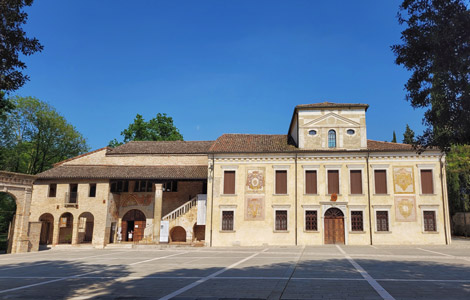
The majestic architecture is an entrancing sight for the many tourists who flock here. The 15th century Grimani entrance tower, the abbot’s living quarters and the lavish decorations inside the basilica by painters from Giotto’s school all bear witness to the site’s historical and cultural importance. In particular, we recommend looking inside the abbey at the beautiful finds, frescoes and altar, as well as the crypt below the chancel, where the urn of Saint Anastasia is kept.
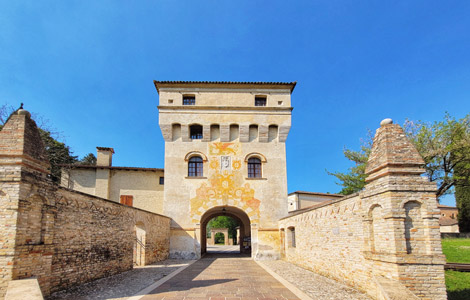
The historic centre
Although it’s only small, the historic centre of Sesto al Reghena is packed with charming and historical sights. Its marvels include the 17th century “Villa Zanardini” – which has two wings of service buildings known as “barchesse” alongside it and is open to the public on special National Trust for Italy (FAI) days – and “Palazzo Burovich”, the façade of which is partly frescoed with rural scenes. Don’t miss the delightful Italian garden, which is a treasure trove of green flowerbeds and harmoniously arranged roses.
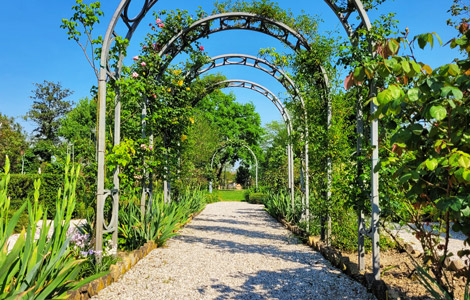
The natural landscape
In Sesto al Reghena, nature lovers can admire gorgeous scenery on relaxing walks surrounded by greenery.It’s only around 300 metres from the abbey to “Prati Burovich”, where you can fill your lungs with cool air as you take a gentle stroll in the shade of elm, oak and mulberry trees, along marked paths among meadows filled with various species of flowering plants that promote pollination by bees, as well as providing ideal shelter for a range of types of birds and squirrels.It’s also worth taking a look at the “Fontana di Venchiaredo”, a karst spring in the wood between Sesto al Reghena and Bagnarola that inspired the famous Italian writers Ippolito Nievo and Pier Paolo Pasolini. Finally, we recommend taking the time to see the recently restored “Stalis Watermills” on the Lemene river. The name comes from the Italian word “stalle” and refers to the sheds and shelters for farm animals that once stood there. Visitors can reflect, relax and enjoy some peace and quiet in the magical atmosphere.
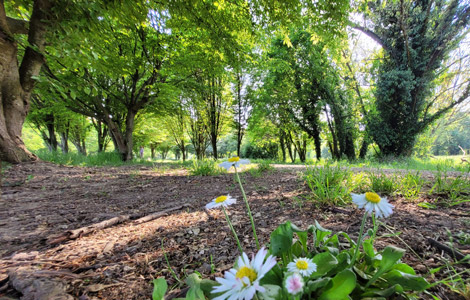
How to get to Sesto al Reghena
There are a number of ways to get to this beautiful, historical treasure trove in Friuli.
The most convenient and advisable option is to travel by car. It takes about 10 minutes to drive there from Portogruaro. Follow the free A28 motorway, take the “Sesto al Reghena” exit and follow the signs for “Sesto al Reghena”. It’s just a few kilometres away.
If you choose to travel by train rather than driving, get off at Portogruaro/Caorle station and then take an ATVO bus. It’ll take about 20 minutes to get to Sesto al Reghena.
If you’re fond of cycling, we recommend the route that goes from Portogruaro to Sesto al Reghena via Gruaro. It’s a fairly quiet road that’s about 12 kilometres long, so you should get there in less than 40 minutes.
So take our advice and treat yourself to a trip to beautiful Sesto al Reghena, where you can explore the fascinating historical sites and hidden treasures.
When you visit the small but stunning town in the Veneto countryside, why not take the opportunity to spend a few days enjoying the sea, sand and sunshine in one of our local beach resorts, such as Bibione, Jesolo or Caorle? One last tip: sign up for the Agenzia Lampo newsletter for regular updates about the latest news and events in the area, not to mention offers and promotions. Have a great time exploring Sesto al Reghena!
